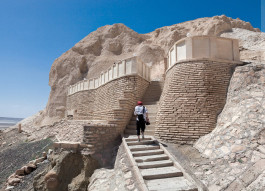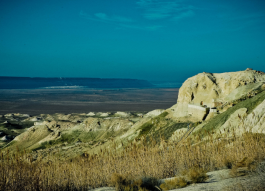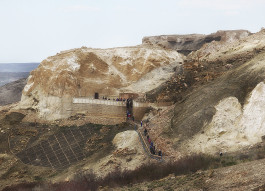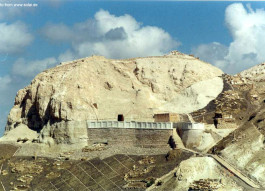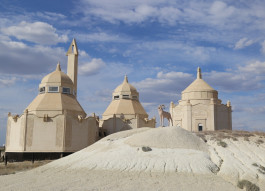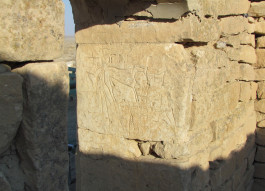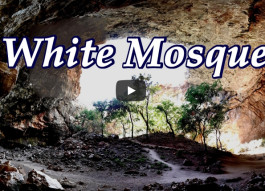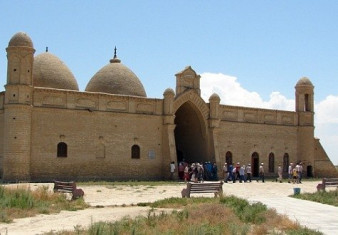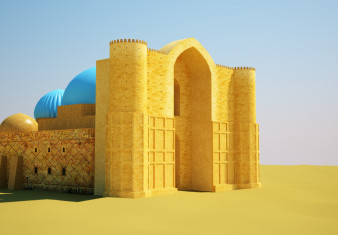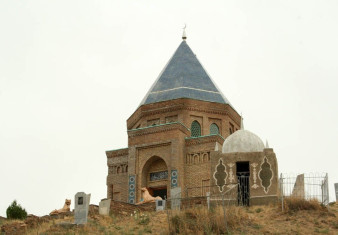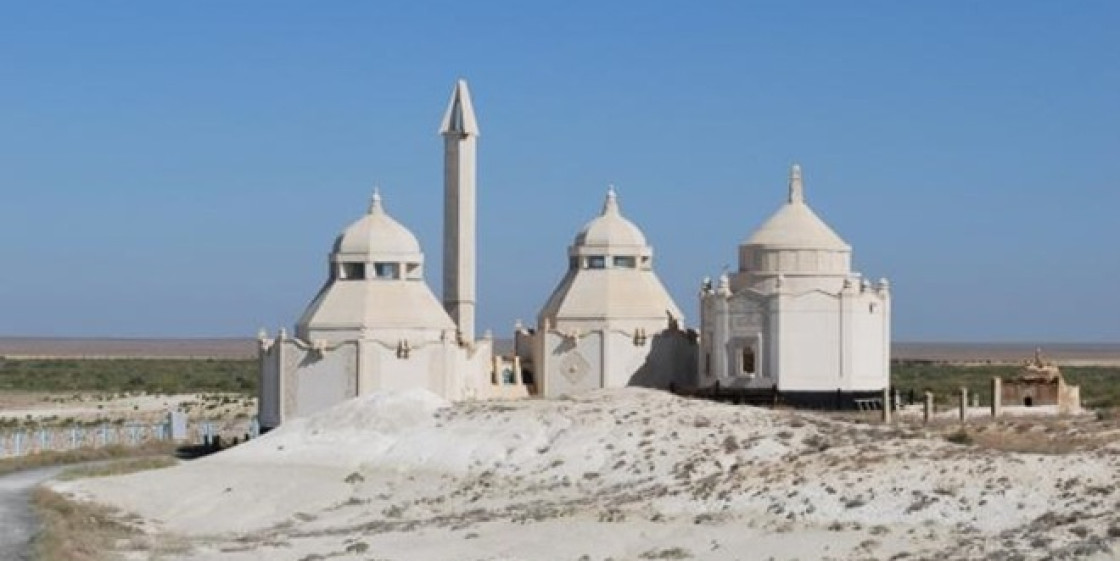
 Holy places
Holy places
Beket-Ata Underground mosque is located in the Oglandy countryside, Mangystau region. This religious monument of architecture dates back to the XVIII century. Beket-Ata is considered as a holy place, in importance as a burial of Khozha Ahmed Yassaui. During two centuries, pilgrims come here for bowing the Holy Spirit.
Beket-Ata is known as a predictor and prophet, to whom was open Genesis book. He was also famous as a healer, a man who knew the laws of physics, mathematics, and astronomy.
According to legends, Beket-Ata lived in the second half of the XVIII century. He was born near the Kulsary village, Atyrau region. He came to bow for ashes of sage Shopan-Ata at the age of 14 in order to receive a blessing. On the third night, Shopan Ata gave him the mandate to study. After receiving a mandate from sage, the young man went to Khiva, where he learned science at a madrassa. When he reached the age of 40, he became a Sufi and began to teach children to literacy.
Beket-Ata passed so long holly way, while arrived again to Mangystau. He healed people: when weak and suffering people came to him, he helped and gave them health and vitality. During solution of disagreements or issues, he showed his wisdom by leading both parties to an agreement. Beket-Ata instructed believers to live in truth, be fair and do good things.
Sage and saint were saved as a warrior in memory of people, who accomplished the feat in the battle with Kalmyks. He had the heroic strength as his great-grandfather - Eset-batyr.
Beket-Ata died approximately in 1813, and he was buried in the Oglandy tract near the underground mosque. According to legends, Beket ata built four mosques in different places. One of them is located near Mangystau, in Oglandy, the second is in Beyneu, and the third is located along the Zhem River, the fourth is on the coast of the Aral Sea, in Bayaly.
The largest mosque is in Oglandy. It was cut down in the middle tier of high cliffs, descending ledges into a deep ravine, and overgrown with bushes. Steps lead to a small area in front of the mosque. The first room is the lobby with illuminated skylight, which punched in the center of the domed ceiling. On the west of the lobby is the prayer hall with a mihrab, and two rooms are on the south-east, in one of which buried Becket-Ata.
The lobby of the mosque has a circular plan shape (diameter is about 4.5 m). The ceiling has a flat dome shape. The whole interior imitates the Kazakh yurt. According to the presence of mikhrab niches in the south-west wall, it is the prayer hall. A semi circular room was adjoined from the west side, in which the corner pillars of the floor level is raised as a Sufi.
Obviously, the hall was connected with the wide passage of the third location on the north side, which is also large. The purpose of this space is not entirely clear. It could be additional space for praying or warehouse. Narrow doorway of the room connects it with the fourth, which was adjoined from the east side. The walls and ceiling of the last were hit and the wreckage of tombstones was found on the floor. The walls of the mosque were smoothly hewed and had no traces of decoration, except niches for lamps.
The unusual acoustics of the underground mosque amazes - all areas have a good audibility of pray readings. There were no vent drafts (wind) during opening the doors. It seems that the Sufi intuitively reached the laws of science. Scientists give a bold hypothesis that the Beket-Ata mosque was as the observatory, where the saint was watching the movement of heavenly bodies. It allowed him to predict severe winter, heat, rainfall and to determine the time for moving to zhailau…
House pilgrims are at the top of the Oglandy tract, which is also called "the house with blue domes". Beket-Ata Necropolis is the spiritual, historical and architectural monument. Despite the difficult access, it is a place of mass pilgrimage. People say that after visiting the grave of Saint Becket-Ata mosque, prayers get well.
There is a version that the carved rooms into the rock faithfully replicate the layout of pyramid rooms of the Cheops! According to the assumption of experts, it is an extraordinary resemblance, which connects with the symbolism of Sufism that full of mystical symbols of antiquity, including the Egyptian priests.
Beket-Ata Mosque is a holy place in Oglandy. It was a pilgrimage place of Mangyshlak residents for many years.
Arystan Bab Mausoleum is a mausoleum in Kazakhstan close to the village of Kogam and Otrartobe.
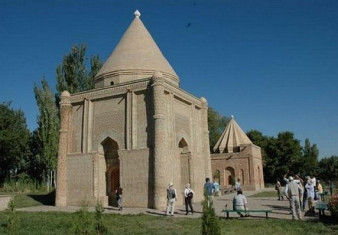
The Aisha-Bibi is in the west of Taraz, Kazakhstan on the Silk Road. It is locally famous as a monument to love and faithfulness.
The religious structure continues to draw pilgrims from across Central Asia and has come to epitomize the Kazakh national identity.
Baydibek Karashauly (dates of birth and death are unknown) lived in the 11-12th centuries in the neighborhood of East Karatau, died in present Algabas district, near Aktas stud and buried on the river bank of Balabogen. The tomb established still in the ancient time with a dome remained.
Domalak Ana Mausoleum is a unique architectural monument of the South Kazakhstan.
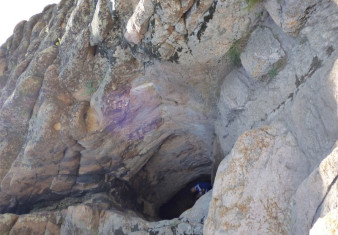
Everything that is known of this cave, is similar both on true and false at the same time. Local people say that there are three caves called Konyr-Auliye ("auliye" – sacred, the Saint) in Kazakhstan.














